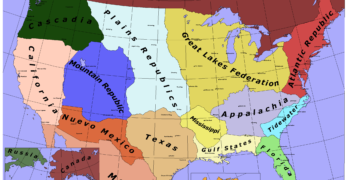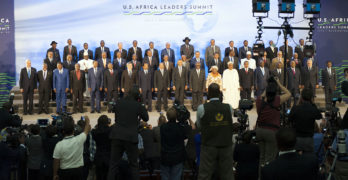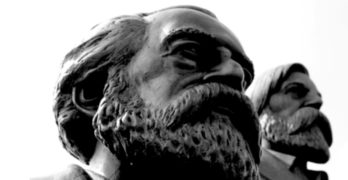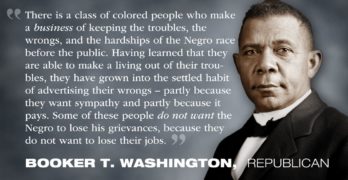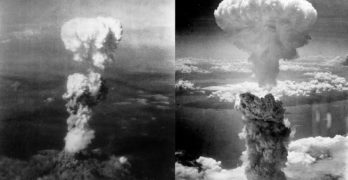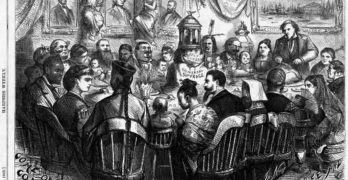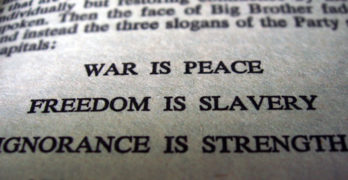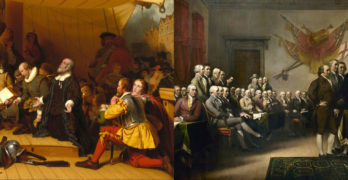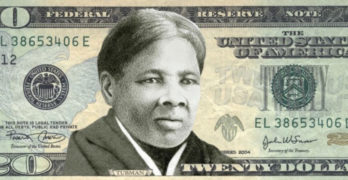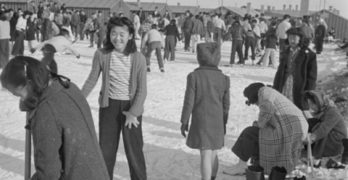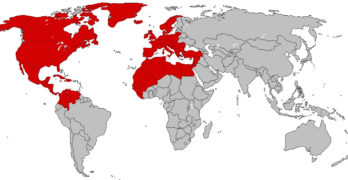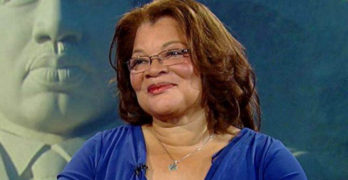 Africa is a place where Christian missionaries invested more than a century of effort, labouring in obscurity and laying the foundations of faith among many Africans. They sacrificed their lives to scatter the gospel seed to many regions of Africa long before the invention of tools modern evangelists use to harvest massive crowds today.
Africa is a place where Christian missionaries invested more than a century of effort, labouring in obscurity and laying the foundations of faith among many Africans. They sacrificed their lives to scatter the gospel seed to many regions of Africa long before the invention of tools modern evangelists use to harvest massive crowds today.
However, the mystery to me is how the life-giving message of Jesus can become dead and a fresh move of God can grow stale. How does it happen? Evangelist Reinhard Bonnke who began his missionary work in Africa has this to say:
The first step, I think, is when methods that worked in the past are enshrined, and new wind of the Spirit is resisted. Old ways are repeated without inspiration by many who labour as professionals. Perhaps they do it for money. They become what Jesus called a hireling for the Lord. If one comes who dares to break the accepted patterns, he is persecuted. They have forgotten that the Lord seeks a living and growing relationship. He resists being entombed in a method, or a building, or an organization-no matter how successful it might once have been.
During the East African Revival Fellowship, the Ugandan clergy were a formidable group opposed to the young enthusiasts for revival. One of the consistent themes of these early revivalists was their opposition to what they called “obukulu” in the Church. Bakulu is Luganda for elders, those in authority. As indicated in the previous post, this hierarchical system of authority had come to represent authoritarianism in Church life, a wholly negative critique of the clergy, who clung to the trappings of prestige, respect and power which their status gave them. These elders resented the attacks from revivalists on many aspects of traditional Kiganda culture.
Incidentally, this issue of the relationship between Christianity and traditional culture was receiving particular prominence in 1941 due to the re-marriage, against all precedent, of the Namasole (the Queen Mother) to a young school master who had been training at Mukono, and who was subsequently to become a strong believer of Jesus Christ. The Bishop and the leaders of the Church of Uganda were unpopular for sanctioning the marriage, and this only served to increase the hostility against the East African Revival Fellowship on the part of many Baganda.
The Traditional Anglican Church
The Anglican Church in Buganda was already established with its own traditions, with a vigorous indigenous clergy jealous of its status and rights, and an articulate laity. Many Baganda resented the revivalists because they challenged their icons, images and other monuments, and attacked their deeply held Kiganda traditions and practices.
The revivalists upset the informal accommodation between Kiganda culture and Christianity which had gradually grown up. They denounced the continuance of traditional religious practices by Christians and they accused the Church of turning a blind eye to this.
They refused to have anything to do with such rituals as those connected with the birth of twins, or with the last funeral rites (Okwabya Olumbe), both of which the revivalists felt involved immoral practices. As a result there has a tended to be a suspicion of Born Again Christians on the part of ordinary Baganda Christians, and a resistance to their ideals becoming normative in the Church.
Although the revivalists had always resisted taking on a bureaucratic organizational structure, priding themselves on their openness to the Spirit, nevertheless, they had developed a quite tightly-knit informal structure of authority based on senior brethren (ab’oluganda), who often received the honorary title of Taata (Father).
Each district had a number of such senior brethren, and the mobility of brethren in travelling around to attend weekly or monthly fellowship meetings or larger scale conventions meant that the senior brethren had many opportunities for meeting each other and discussing the development of the movement. Thus an informal network of authority established itself, and this enabled the leadership to exert a fairly tight control-sometimes even to the extent of causing feelings of excessive authoritarianism, friction and schism within the Revival.
The Revival existed with a certain amount of tension between the desire for cohesion, solidarity and resentment, especially from strong personalities of an undue exercise of authority by even more dominant senior brethren.
Educational Differences
To make matters worse, if the elders of the church, the clergy, were deeply suspicious of the revivalists, the elders in society at large, the chiefs were equally hostile. Here again generational and educational differences between the old elite and the rising generation of well-educated revival leaders may have exacerbated tensions between the two groups.
The creation of an elite class made Western education became the heart of an internal challenge in Uganda resulting in the divide between those who have and those who don’t. Schools were not evenly spread throughout, so the tribes who received education first had an advantage.
As David Abernethy observed, “the uneven spread of mission schools by creating objective differences between various ethnic groups stimulated rivalry between them.” That imbalance was not corrected and therefore made Western education to be one of the reasons for conflicts in the revival.
The fear that these educated revivalists were a potentially subversive force was shared by the colonial government. In this case they were worried by the threat to social order which an incipient mass-movement like the Revival posed.
Quarrels, Divisions and Opposition From CMS
The Revival also divided the missionary community. Most of the CMS missionaries in Uganda, while longing for some kind of revival in the church of Uganda were opposed to the particular manifestation of revival among the believers.
They resented the anti-clericalism of Dr. Church and the Ruanda Mission, regarding their criticisms of CMS and the Ugandan Church as arrogant and insensitive. The actual experience of revival was proving controversial. The radical egalitarianism and unconfined freedom of the revivalists were difficult for many to accept.
Salvation comes only through being washed in the blood of Christ shed on Calvary. Without the shedding of blood, there is no remission of sin (Hebrews 9:22). You were not redeemed with corruptible things…but with the precious blood of Christ, as of a lamb without blemish and without spot (1 Peter 1:18-19).
The centrality of the atonement was a classical feature of revival; but the European Evangelicals thought the revivalists gave it an “objective reality or conception” almost distinct from the Lord Himself, which they found disturbing. They even asked Joe Church to refrain from using the chorus “What can wash away my sins? Nothing but the blood of Jesus.”
The Rise of The Reawakened
In the 1940s and 50s, the Born Again believers gradually became a more respectable group and a more integrated into the life of the church. But this brought a feeling among some of the brethren that worldliness was creeping in, a falling away from the fire and enthusiasm and commitment of the earlier period.
It has been pointed out that the revival did have some weaknesses. Offensive confessions of adultery, where people’s names were mentioned in the audience of children caused many problems. These secret sins should have been kept under the blood.
In the 1960’s a new search for a reawakening and holiness came to be expressed in conflicts over dress and fashion, about whether brethren should take out loans and become burdened with debt in order to improve their material standard of living.
There was also a growing up a generation of educated believers who wanted to integrate the Revival more into modern life. Many were from Western Uganda. Festo Kivengere from Kigezi had emerged as a prominent leader. He and Janani Luwum were perhaps the two most outstanding Born Again churchmen. Luwum became Archibishop in 1974 and was murdered in 1977 as a Christian martyr and champion of human rights during Amin’s tyranny.
Festo had spent many years as a teacher and evangelist in Dodoma (Tanganyika) but had returned in 1959. Kivengere had a remarkable career as international evangelist, founder of Africa Evangelistic Enterprise, Bishop of Kigezi and a man at the centre of Ugandan national life, working for lasting solutions to the intractable problems which Uganda has faced.
He above all transcended the limitations of Balokole piety and practice, and encouraged the Balokole tradition as a whole to be dynamic, creative and responsive to the profound changes in culture and society.
With one Archbishop’s approval Festo decided to seek ordination and to attend a theological college in the United States. As this was decided without the approval of the brethren in Kampala, it was considered a betrayal of group solidarity.
Festo was becoming increasingly critical of the narrowness of many of the Baganda brethren, and from America wrote to Joe Church, by then living in retirement in Kampala: “When the spirit of freedom gives place to the spirit of fear among the brethren, that to me is the saddest day for Revival … Revival is bound to die when Christ is replaced by any of these treasured traditions-of plainness of dress, hair fashions–plus-plus!”
Joe Church was equally saddened by the disputes within the Revival, but wrote back to Kivengere: “Buganda has changed since the burning of the Lubiri. They are sad still and very sensitive, we have to come and sit with them, where they are, like Ezekiel did.
The prophet Ezekiel showed the heart of a pastor when he visited the exiles at Te-abib. Overcome by what he saw, he said very little; in his own words, he just ‘sat and remained there among them for seven days, overwhelmed with astonishment and silent (Ezekiel 3:15). It is a basic principle of pastoral care that to help people in trouble, you have to put yourself in the place where they are and allow them to be themselves and to express what is in them.
This reference to the flight of the Kabaka in 1966 and the subsequent abolition of the kingdom of Buganda put the increasing isolationism of many of the brethren in the context of the tragic history of Buganda in the 1960s, a tragedy which was to engulf the whole nation with the coming to power of Amin in 1971. That year was when the disputes among revivalists came to a decisive break.
The believers became divided and no longer shared fellowship with the brethren at the Namirembe weekly meetings but began to meet separately. Nsibambi, who had in many ways sympathized with Mondo’s stand, now came off the fence and denounced the awakened as extremists. They responded by denouncing the moderate believers as those who were asleep. “Where has a revival like this one been seen, full of cows and money?”
It Was a Mystery
In spite of all these weaknesses that surfaced during the revival, the East African Revival conformed in all essential respects to an European religious model. It was the means of Africans expressing their dissatisfaction with a missionary religion which left them stranded half-way between the pagan and Christian society.
They expressed their dissatisfaction by seizing the initiative in a movement which fundamentally challenged missionary superiority. Both sides of the paradox could be true at once only because of the remarkable agreement between the characteristic features of the European model and the spiritual needs of the East African Church at that point in its history.
Yet as Gordon Hewitt rightly comments, “The immensely rapid response of Uganda to the proclamation of the Christian gospel remains a mystery.” God is in His providence and immense love found the souls of those poor Africans worth dying for!
To the Christian mind the congruency is providential rather than accidental. Without the Revival, the Church in East Africa could scarcely have had the strength to survive internal conflicts like the Mau-Mau in Kenya, standing up to President Idi Amin in Uganda, and subsequently the Rwandan Genocide 50 years later.
The church in Rwanda experienced some of the same problems as the church of Uganda during the East African Revival Fellowship. In Part 6 we shall examine the Revival and its impact and relationship to the 1994 Rwandan Genocide.


